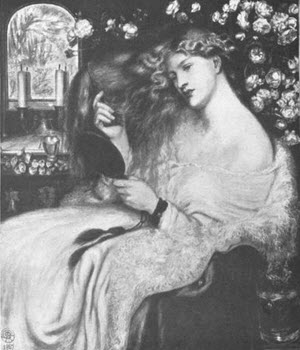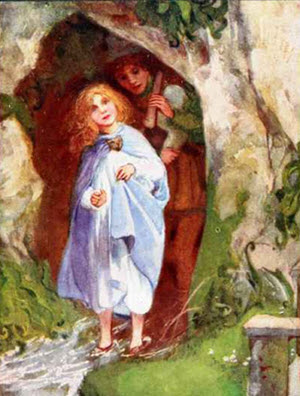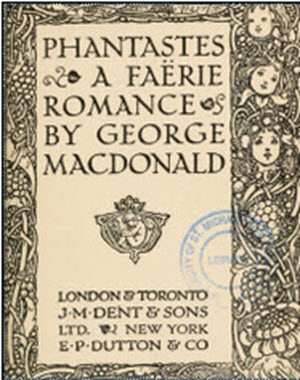At the Back of the North Wind, by George MacDonald
Book-Lover.com >> George MacDonald Books >> At the Back of the North Wind

The North Wind Blows
At the Back of the North Wind (published 1871)is a surprisingly deep and philosophical children's classic, written by George MacDonald. It has many layers of meaning, and subtly deals with the theological problems of death, suffering, and redemption.
The story centers on the short life of a boy named Diamond, living in Victorian England, and his adventures with the Lady of the North Wind. As his name suggests, Diamond is pure and innocent. Even when he is living in difficult circumstances, surrounded by rough men, bad words do not stick to him and cannot penetrate his innocent purity of heart.

The story begins with Diamond lying in bed, with the cold north wind blowing through a hole in the wall. He tries to plug the whole but the wind gets in anyway and with it comes the personification of the North Wind, a beautiful Lady. The North Wind befriends Diamond and takes him flying on her errands and adventures. Some are glorious excursions, while others are menacing and seemingly evil. On one of these journeys the North Wind sinks a ship and the owner, who had stakes all of his finances on it, is financially ruined and Diamond' father, an employee of the ship owner, becomes unemployed as a result and has to move to London and work as a cab driver to make ends meet. The North Wind's sinking of the ship and the financial ruin that results may seem terrible, but it is explained that the ship owner was in danger of becoming avaricious and dishonest because of his financial speculations, and that this disaster saved him.
It seems that the North Wind is an agent for God, carrying out deeds that may seem bad from one perspective but are actually good from the all knowing perspective of an Omniscient God. The men who drowned on the ship and the ones who lost their jobs in order to set the ship owner on the right path might beg to differ. I am sure they did not appreciate being used as toold to an end.
It appears as well that the North Wind is also a personification of death. One one of their excursions she takes Diamond to her beautiful country, but he soon wants to go back because he misses his mother. Although it seemed to Diamond that he had only been gone a brief while, he finds when he returns that he had been hovering near death for three days, sick with tuberculosis.

When he returns from his brief stay in the land at the back of the north wind, Diamond's personality is changed. Always pure of heart, he devotes himself even more to helping those around him, doing good deeds, but often being rebuffed as a simpleton or retarded child. One character refers to Diamond as a "Child of God" which was a euphemism meaning retarded in that era. However the story implies that Diamond really is the child of god, and perhaps meant to be a Christ like figure, rejected by the world.
Ultimately, Diamond dies of his disease, and he journeys to the land at the back of the North Wind, essentially the afterlife. We learn that in fact the life that he left behind was the unreal shadow life and only in death can he experience the real life that awaits us.
The book is framed as a fairy tale, but touches on deep philosophical and theological issues, particularly the questions of why a benevolent God would allow evil and death. The answer given by George MacDonald is that all of these negative things are not really negative when viewed from the correct perspective.
This was a deeply personal story for George MacDonald. Not only does it exemplify the things that h believed in as an ordained Christian minister, but the character of Diamond was based on a young son of MacDonald's who died in infancy.
In its day, At the Back of the North Wind was a very popular children's classic. But changing tastes in children's literature have relegated this worthy story to the shelves of forgotten books. It is worth a read, not just by children, but by anyone who has ever asked themselves these questions.






